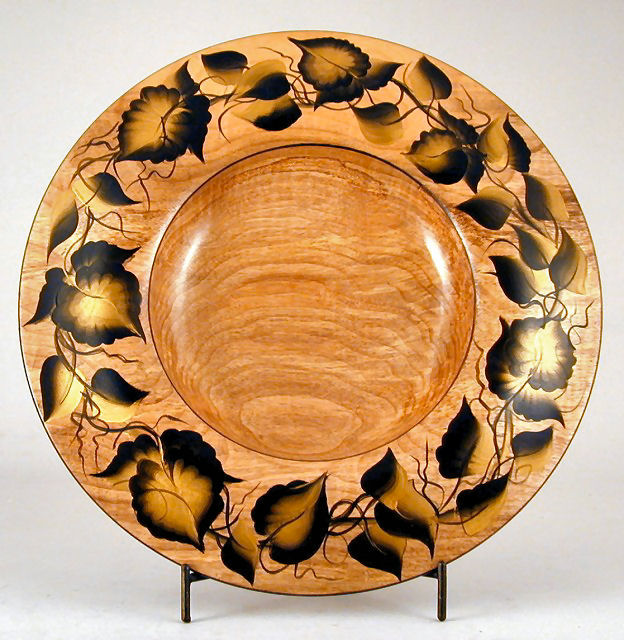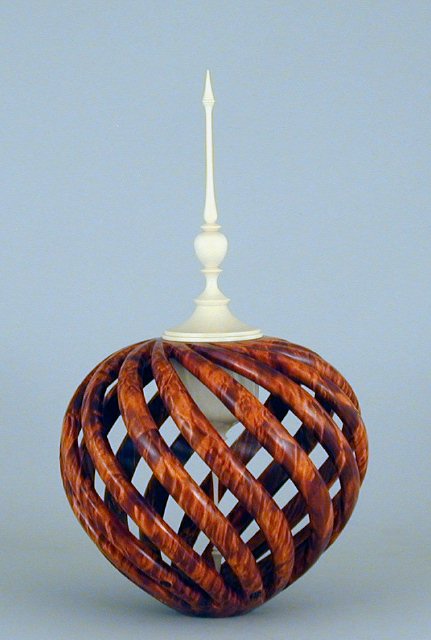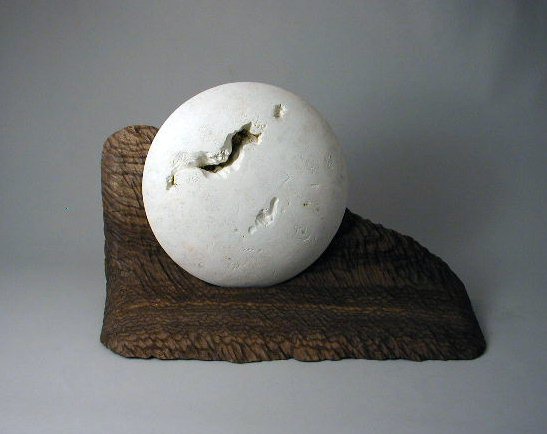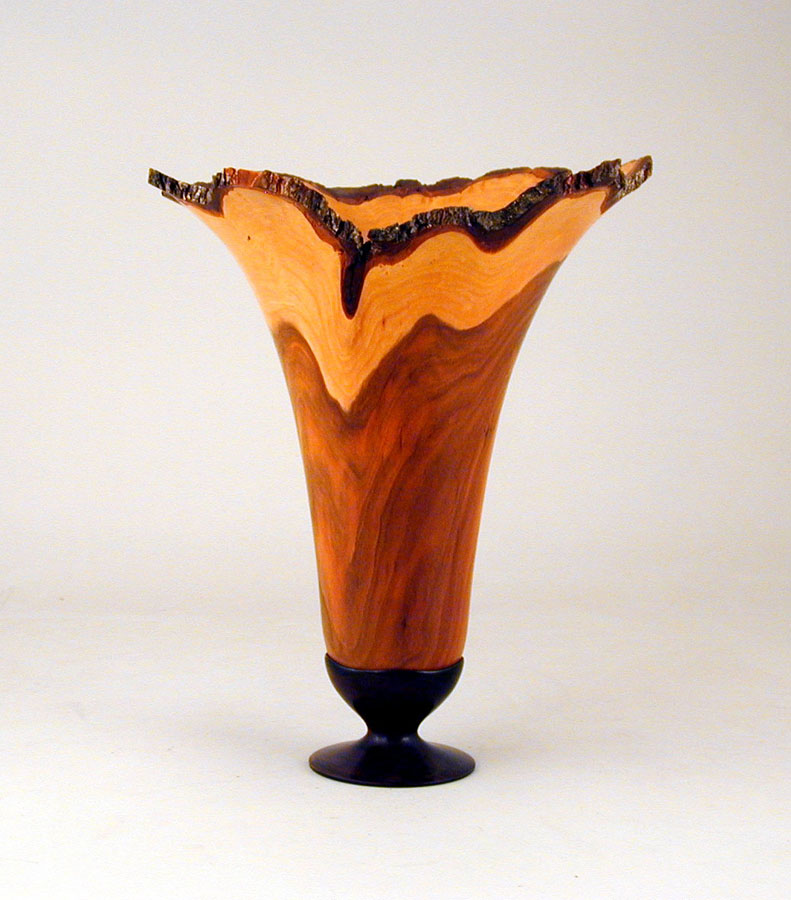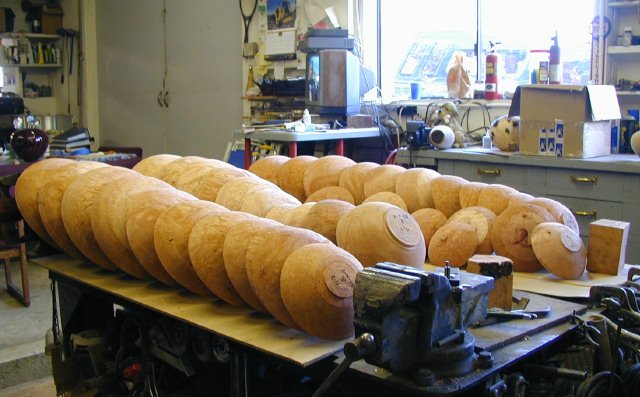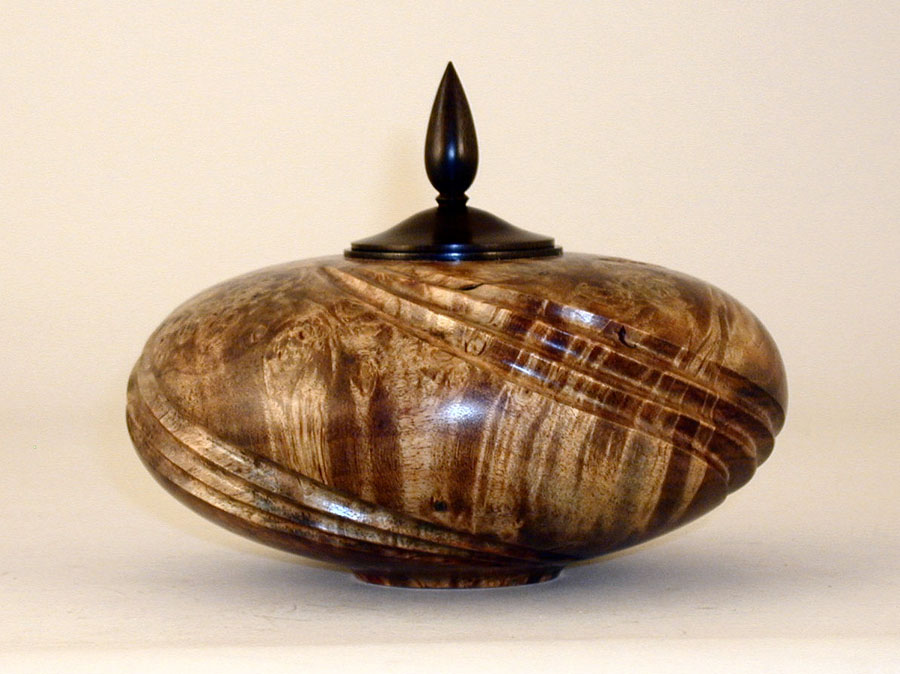
Some people seem to choose careers that accurately presage their entry into woodworking. Others, like Dave Schweitzer, pick careers and hobbies that couldn’t seem further apart. “I worked the construction trades for Continental Dirt Contractors,” Dave explained. “We started with three pieces of earth moving equipment. When I retired, we had 60. At the same time, I owned a fleet of water and container trucks.”
That certainly provides no clue to his excellence on the lathe. Nevertheless, in just a little more than a decade of woodworking, Schweitzer has proven his mettle with award-winning and, more importantly, eye-popping, turnings. To hear him tell it, those skills were being honed on steel, though he may not have known it at the time.
“I never took any formal training, nor looked at books or videos, because I wanted to spend my time turning instead of reading. However, I had good hand/eye coordination and was used to working with my hands. Welding, for instance, relies on a lot of control. It wasn’t until after I was turning for a while that I started to equate that with the motions used in welding. There are strong similarities between those two fields. Other than learning the vagaries of the different materials and tools, the bottom line is that people who can make things with their hands can make almost anything with their hands, and the materials and tools they are using are quite secondary.
“I started piddling around with woodworking in 1996,” Dave recounted, “in part because I am not a TV watcher. I had worked with steel all my life, and there were always woodworking tools around the construction site, so I was somewhat familiar with coarse woodworking, though I had no formal training. I’d come home at night and start making boxes for my wife to put her flowers in, then moved on to other flat work. Because my time to spend woodworking was very limited, I’d come back and have to figure out where I left off on a project that had been left a couple of weeks prior. It was always a challenge.
“I can’t remember exactly how I got a lathe. Perhaps one of my projects required turning, but I started to gravitate to turning because it offered instant gratification in that I could complete a project in an hour or so. Also, I could work with green wood, which was always available for free in the construction industry. We were always taking trees down, and I was always taking wood home. To this day, with the exception of exotic wood finials, all my turning starts with green wood. If you look at my work, you will see it is made from local wood.
“My first experience turning dried wood came when we were doing a warehouse job in Seattle near a woodworking store. I already owned a lathe, so I stopped into the store and bought a bowl gouge and a piece of wood, because I wanted to try making something out of dry wood. It was as hard as a brick. Finally, I got the bowl gouge sharpened and managed to throw the bowl off the lathe about a half dozen times. It had more air miles than I did.
“Because I had worked so hard on it, when it was finally done I took it inside to show my wife. She was markedly unimpressed, and I was rather disappointed. Discouraged, I took it outside and threw it for my dog to fetch, but even he didn’t go after it. It was a total disappointment. After that, I went back to green, and less expensive, wood.
“It is almost impossible to dry a really pretty piece of maple or madrone in bulk, but rough turning green allows you to make a blank that will dry properly. I boil madrone and apple burl for about an hour per inch after I rough out the bowl to help stabilize the wood. After it dries, you can return it to the lathe for final turning.
“When I get customers who want something made from a burl they own that is already old and dry and hard, the only thing I will make is either a small plate or a small platter. That way, I don’t have to spend a lot of time cutting dry, hard, dusty wood. Green wood is a lot easier to deal with. You get long, easy-to-cut shavings with very little resistance.”
These days, Dave has a respectable, if somewhat unintentional, turning business. “Turning did not start out to be a business for me,” he insists, “but rather a retirement activity. However, after you give everyone you know a few bowls, they start piling up. A few school teachers in the town where I live put together a gathering of artists and businesses. That gave me some exposure to the public and in 1999, I started selling bowls. Most of what I make and sell are utilitarian bowls. I probably sell about 150 serving and salad bowls per year.
“I’m sort of the preacher of wooden bowls, always trying to raise the awareness of what makes a bowl a good turning. For instance, all my utilitarian bowls have a rolled rim on them so that when you pick them up, you can hook your thumb over the rim without feeling a sharp edge. I tuck the inside edge in to create a shadow line on the inside.
“Although I am basically a utility turner, making bowls and platters and boxes, I do turn some art bowls, but the art turning evolved later. I want my art pieces to be put under glass where no one can touch them, but I want people to touch and handle my utility bowls. That’s the only way you can experience the tactile quality, finish and form. I sell 20 utility bowls to one art piece, but the art bowls are there because people like to see them. Often people will buy a simple bowl that they can afford knowing it comes from the same hand that did the elaborate art piece they cannot afford.
“As for the inspirations for my art turnings, they often come to me while I am sleeping, so I keep a scratch pad by the bed. I live on a saltwater bay, and a lot of my inspiration comes from my environment and the things I observe around here. The colors in my dyed pieces come from the colors I see in nature. As it turns out, the colors I see are not quite what others see, because I have limited color blindness. I have problems distinguishing golds and browns, but I do see other colors.”
Not surprisingly, Dave is quite in demand as a turning teacher as well, and frequently teaches both in his studio and through various turning guilds. “Oddly enough, I can teach anyone how to do a hollow form,” he points out, “but teaching someone how to cut an inside line on a bowl that accurately matches the outside is quite difficult. A bowl is a piece of wood standing there naked. You can see the inside, outside, wall thickness, sanding mistakes and so on. Everyone assumes they can turn a bowl, but to turn a really good one is not that easy.
“With a hollow form, the grain, outside line and foot have to be right, but the interior is less critical because most of the time no one can see inside it. A hollow form is an outside shape with a hollowed-out wall thickness of about three-sixteenths, but unlike bowls, the interior cavity does not have to perfectly mirror the exterior lines.”
Dave’s work is a delight to those who get a chance to see it, but to hear him tell it, turning also provides him with both sanity and love, at least temporarily. “Standing by the lathe is a good substitute to going to a psychiatrist,” he insists. “The space in front of my lathe is my zen zone, my happy place. I fall in love with each piece after it is done, but once I spend a few weeks looking at it, I start to find things I could have done better.”
After looking at some of his exquisite work, that seems hard to believe.
